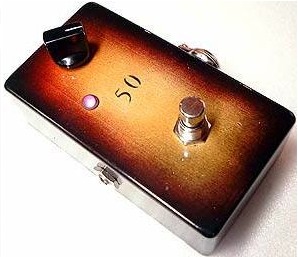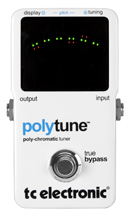 I know what you are saying, what does the TC Electronics Polytune have to do with tone? Well, in a way, keeping your strings in tune has a lot to do with how you’ll sound. While I like to tune by ear, its nice having a tuner pedal to kick on, and get the tuning perfect. As well, this pedal works with different tunings. I think the main feature that makes this pedal stick out from the other tuning pedals is that you can strum all the strings at once, and the Polytune will tell you which strings are out of tuning. No more having to go through each string. Now that I’ve owned this pedal for about a year, lets get to the review…
I know what you are saying, what does the TC Electronics Polytune have to do with tone? Well, in a way, keeping your strings in tune has a lot to do with how you’ll sound. While I like to tune by ear, its nice having a tuner pedal to kick on, and get the tuning perfect. As well, this pedal works with different tunings. I think the main feature that makes this pedal stick out from the other tuning pedals is that you can strum all the strings at once, and the Polytune will tell you which strings are out of tuning. No more having to go through each string. Now that I’ve owned this pedal for about a year, lets get to the review…
Many have said that the feature about finding out which strings are out of tune is a gimmick. While I disagree with this, I do find that this feature isn’t alway 100% accurate, but it still works. It still lets you know which strings are out of tune. I think its a good feature, but not perfect. Good thing you can still tune one string at a time, as the Polytune auto detects if you are playing all strings at once, or just one string.
The LED light on the Poly is really great. It’s nice and bright and it also adjusts to your environment. No more straining your eyes to while tuning. It extremely clear to read.
 Many have asked what happens when you turn on the pedal.. does the guitar still sound, or does the pedal mute the guitar? The answer is that it mutes the guitar, which I think is a good feature. You can easily tune between songs without anyone really even knowing. As well, if you are a lead guitarist who only plays solos in a particular song, you can tune while the band is playing, before your solo starts.
Many have asked what happens when you turn on the pedal.. does the guitar still sound, or does the pedal mute the guitar? The answer is that it mutes the guitar, which I think is a good feature. You can easily tune between songs without anyone really even knowing. As well, if you are a lead guitarist who only plays solos in a particular song, you can tune while the band is playing, before your solo starts.
A note on battery life. Its not great, but its decent. I would opt for an AC adapter. Also a note on size, its a fairly small pedal, like all TC Electronic pedals. Very easy to take around.
I shouldn’t forget to mention that this pedal is true bypass, so there is no effect on tone.
All I can say is that if you are on the market for a tuner pedal, I would opt for the Polytune. Why? It’s tunes in any way you like, have additional features than regular tuners, and at $99, its hard to beat the price. View the TC Polytune on Amazon.
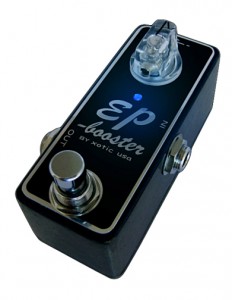



 I recently purchased a Fender Jazz Bass while at a store comparing bass tones. It was evident right away that its tones was the most transparent, that is to say, you could clearly hear each note. Its dynamics were almost reminiscent of a strat. I knew this was the Bass for me when playing some blues lines.
I recently purchased a Fender Jazz Bass while at a store comparing bass tones. It was evident right away that its tones was the most transparent, that is to say, you could clearly hear each note. Its dynamics were almost reminiscent of a strat. I knew this was the Bass for me when playing some blues lines.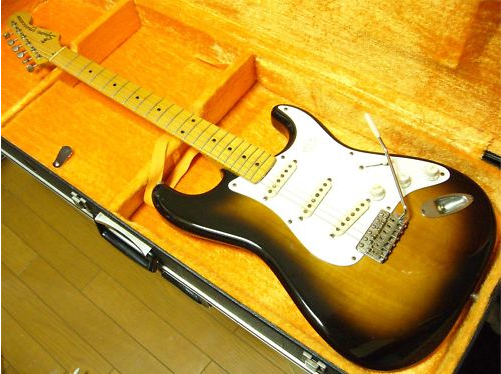
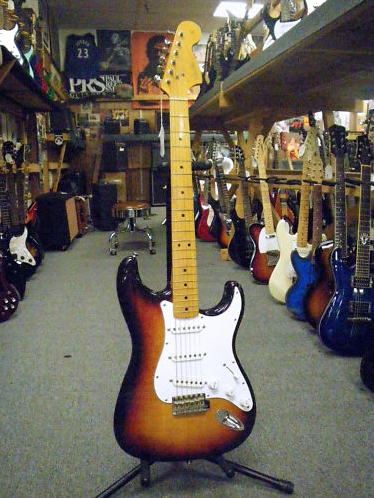
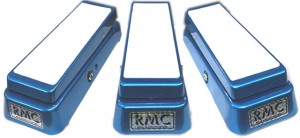

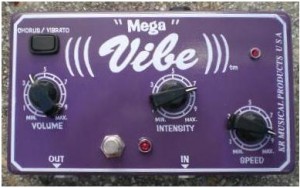 If you are familiar with univibe clones, you know the Megavibe. Many argue that the Megavibe gets the absolute closest to Hendrix’s Machine Gun, at least on the chorus setting. Randy Hansen (also known as the Hendrix Clone) uses a Megavibe, and many say that his tone is closest to Jimi’s. The only downside of this pedal is that they are extremely hard to obtain. You may be only able to find a used one on Ebay at inflated prices, as KR Musical seems to have been out of the scene for a little while now.
If you are familiar with univibe clones, you know the Megavibe. Many argue that the Megavibe gets the absolute closest to Hendrix’s Machine Gun, at least on the chorus setting. Randy Hansen (also known as the Hendrix Clone) uses a Megavibe, and many say that his tone is closest to Jimi’s. The only downside of this pedal is that they are extremely hard to obtain. You may be only able to find a used one on Ebay at inflated prices, as KR Musical seems to have been out of the scene for a little while now.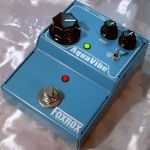 Dave Fox is known for building quality boutique vintage-esqe effects. His Aquavibe is no different, producing that vintage univibe tone, while also adding more flexibility to create different vibe tones such as the ability to change the position of the sweep. The Aquavibe has also been known to have the best vibrato out of all the univibe clones out there. Only downside is that there is about a 1 year waiting list.
Dave Fox is known for building quality boutique vintage-esqe effects. His Aquavibe is no different, producing that vintage univibe tone, while also adding more flexibility to create different vibe tones such as the ability to change the position of the sweep. The Aquavibe has also been known to have the best vibrato out of all the univibe clones out there. Only downside is that there is about a 1 year waiting list.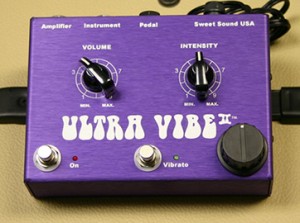 Built by the late Bob Sweet, the Mojo and Ultravibe have been around for awhile, and have been a benchmark for great univibe tones. These vibes are right up there with the aqua and mega vibe.
Built by the late Bob Sweet, the Mojo and Ultravibe have been around for awhile, and have been a benchmark for great univibe tones. These vibes are right up there with the aqua and mega vibe.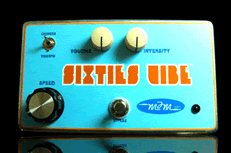 Around the forums, many have been raving about the MJM 60s Vibe. Over at MJM, the 60s Vibe has been modeled after an original univibe. Some really great tones coming from this pedal. Best part is, the MJM 60s Vibe is readily available with no waiting list.
Around the forums, many have been raving about the MJM 60s Vibe. Over at MJM, the 60s Vibe has been modeled after an original univibe. Some really great tones coming from this pedal. Best part is, the MJM 60s Vibe is readily available with no waiting list.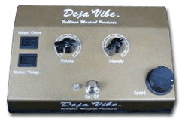 Word around the street is that the original Deja Vibe (gold unit) has some pretty authentic univibe tones. Some have argued that this pedal is closest to the original.
Word around the street is that the original Deja Vibe (gold unit) has some pretty authentic univibe tones. Some have argued that this pedal is closest to the original.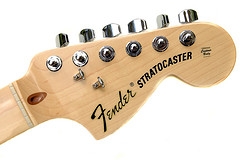
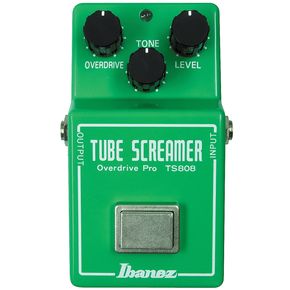 der tube amps. He really liked Vibroverbs and Super Reverbs, usually running them in stereo to fatten up his sound. SRV’s clean tone was quite amazing, which is what Fender amps are popular for. Of course he ran his amps cranked in order to get that tube saturation.
der tube amps. He really liked Vibroverbs and Super Reverbs, usually running them in stereo to fatten up his sound. SRV’s clean tone was quite amazing, which is what Fender amps are popular for. Of course he ran his amps cranked in order to get that tube saturation.